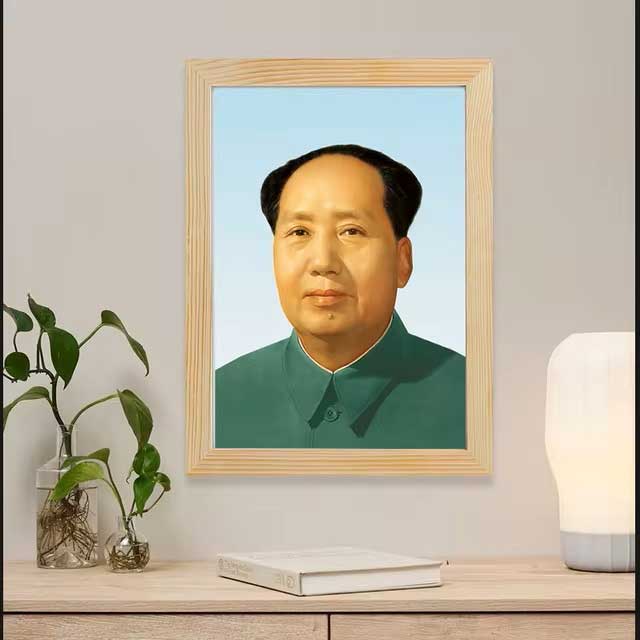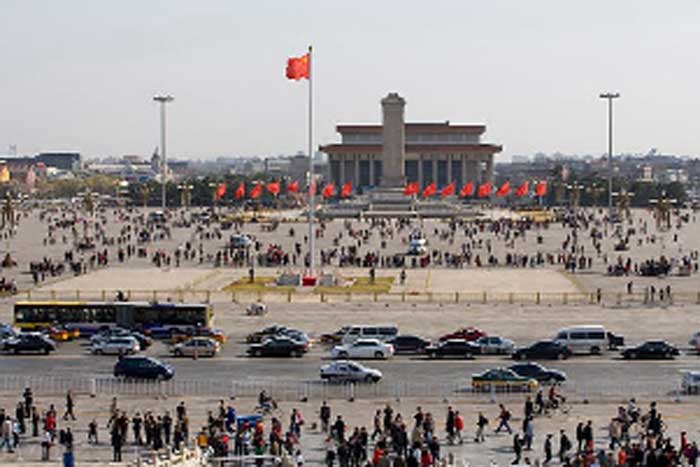

Tiananmen Square, located at the very heart of Beijing, is one of the world’s largest and most iconic public spaces. Spanning 109 acres, it is surrounded by historical landmarks that bear witness to China’s transformation from an ancient empire to a modern global power. This monumental square is home to significant structures such as the Tiananmen Gate (Gate of Heavenly Peace), the Great Hall of the People, and the National Museum of China. However, it is the Chairman Mao Zedong Memorial Hall, also known as Mao’s Mausoleum that stands out as a key site of reverence, drawing visitors from across China and around the world.

The Historical Significance of Tiananmen Square
Tiananmen Square has long been the symbolic center of Beijing’s political and cultural life. It was here, on October 1, 1949, that Chairman Mao Zedong declared the founding of the People’s Republic of China, marking the beginning of a new chapter in Chinese history. Since then, the square has hosted countless parades, celebrations, and political gatherings, symbolizing the unity and strength of the Chinese people. The expansion of the square in the 1950s was part of Chairman Mao’s vision to create a grand public space where the nation could come together.
Today, Tiananmen Square is a major tourist destination, attracting millions of visitors each year who come to admire its architecture, visit its museums, and pay homage at Mao’s Mausoleum.
Chairman Mao’s Mausoleum: A Place of Reverence
In 2016, during a memorable visit to China with my family, we had the opportunity to visit Chairman Mao Zedong’s Mausoleum-a profoundly solemn experience situated at the heart of Tiananmen Square. The Chairman Mao Zedong Memorial Hall is a place of deep historical significance, where the embalmed body of Mao Zedong rests in a crystal sarcophagus. The mausoleum was constructed in 1976, mere months after Mao’s passing, and was completed in record time by volunteers who worked tirelessly as an expression of the nation’s respect and admiration for their revered leader.
Architecturally, the mausoleum is a fusion of traditional Chinese design elements with the grandeur of Soviet-inspired monumentalism. The exterior is marked by striking white marble columns and a large inscription that reads “Chairman Mao Memorial Hall.” Inside, a hushed and reverent atmosphere prevails. The central chamber houses Mao’s body, draped in the red flag of the Communist Party, symbolizing his lasting legacy. The sight of his preserved figure is an emotionally charged moment for many visitors, providing a rare, almost intimate connection with the revolutionary leader who shaped modern China’s history.
For both locals and international visitors, this experience is more than just a historical visit; it’s a chance to reflect on the transformative years of China’s revolution and the enduring impact of Mao’s vision on the nation’s path forward.
A Walk through History: Our Experience at Tiananmen Square
After checking out of our hotel in Beijing, our group made its way to Tiananmen Square with plans to visit Chairman Mao’s Mausoleum. As we approached the square, we were struck by the sheer size of the crowd. People from all over China had gathered, forming a long, winding queue that stretched across the vast expanse of the square. Despite our eagerness to pay tribute, we realized that the wait time was extensive, with lines extending for over a kilometer.
With our high-speed train scheduled to depart Beijing Railway Station at 2:00 PM, we regrettably decided to forego the wait and instead took a detour to explore Qianmen Street, a historic avenue located just south of Tiananmen Square.
Exploring Qianmen Street: A Journey through Time
Qianmen Street is one of the oldest commercial streets in Beijing, dating back to the Ming and Qing dynasties. It was traditionally a bustling center of trade, known for its shops, eateries, and vibrant street life. As we walked along this lively street, we could feel the charm of old Beijing mingling with the modern vibe of the city. The architecture along Qianmen Street reflects a mix of traditional Chinese design and early 20th-century influences, creating a unique atmosphere that feels both historical and contemporary.
Our walk spanned over a kilometer, giving us ample time to take in the sights, sounds, and smells of the area. The street was lined with colorful storefronts selling everything from traditional Chinese snacks and teas to souvenirs and handcrafted items. We made a few stops along the way to pick up some mementos-small trinkets and gifts to remember our time in Beijing.
A Tribute to Chairman Mao: The Legacy of a Friend to Pakistan
As we walked through Qianmen Street, the legacy of Chairman Mao was never far from our minds. Mao Zedong is remembered in Pakistan as a true friend and ally, whose vision of solidarity and support helped shape the strong relationship between our two nations. One significant gesture of Mao’s support came in the 1970s when he approved the transfer of 50 kilograms of uranium to Pakistan, aiding in the early development of our nuclear program. This act of trust and cooperation laid the foundation for the enduring partnership between China and Pakistan, a relationship that remains robust to this day.
Many members of our delegation expressed their admiration for Mao Zedong, not only for his leadership in China but also for his contributions to strengthening ties with Pakistan. His legacy as a champion of revolutionary ideals and international friendship continues to resonate deeply with people in both countries.
Departing Tiananmen Square: A Journey to the Beijing Railway Station
After our leisurely walk and brief shopping on Qianmen Street, it was time to head to the Beijing Railway Station to catch our high-speed train. The experience of walking through Qianmen, with its rich history and vibrant street life, left us with a sense of nostalgia and appreciation for Beijing’s cultural heritage. As we made our way to the station, the bustling cityscape of modern Beijing contrasted with the historical aura of the places we had visited, giving us a glimpse into the dynamic evolution of China’s capital.
Tiananmen Square, with its historical gravitas and the iconic Chairman Mao’s Mausoleum, offered a profound experience that will stay with us for a long time. It is a place where past and present merge, where the spirit of revolution and the progress of a nation come together. Despite not being able to enter the mausoleum due to time constraints, the reverence felt at the square and during our walk along Qianmen Street was undeniable.
Reflections on a Memorable Visit
Our visit to Tiananmen Square and the surrounding areas was a highlight of our time in Beijing. It was an opportunity to connect with the history, culture, and legacy of a nation that has undergone immense transformation. The walk along Qianmen Street, with its blend of old and new, provided a fitting end to our journey, offering a snapshot of Beijing’s vibrant life beyond its historical monuments.
For the Pakistan Media Delegation, this experience was not just about sightseeing-it was a journey through history and a chance to pay tribute to a leader who has left an indelible mark on both China and Pakistan. As we boarded our high-speed train, we carried with us memories of a city that stands as a testament to resilience, progress, and the enduring spirit of its people.




